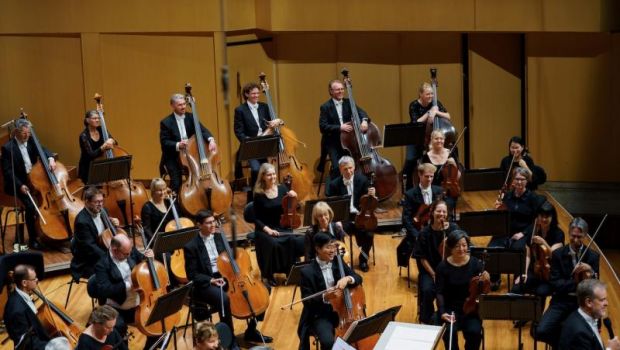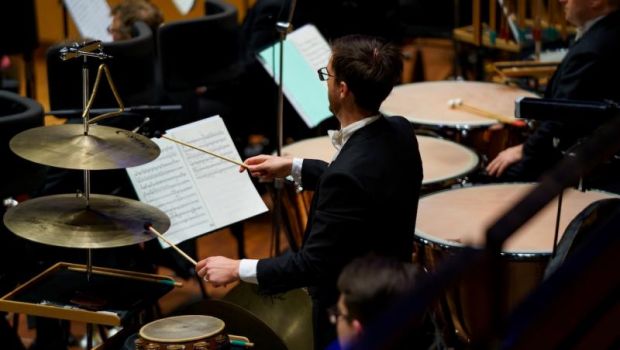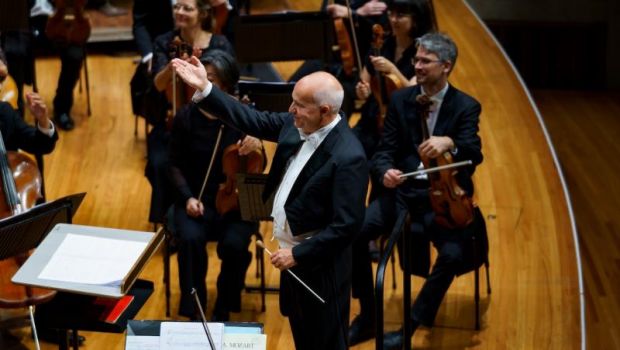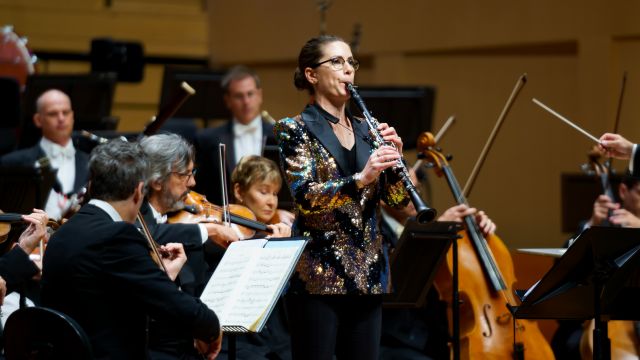Mozart’s Clarinet
A gold and black sequined jacket was the only overtly flashy element in Section Principal Clarinet Irit Silver’s solo on clarinet for Mozart’s ‘Clarinet Concerto, K.622’.
This was an accomplished and flawless performance on an instrument that reaches great heights, seemingly without effort by its talented player. The showcase piece must surely be attempted by any serious clarinettist, as it was written for Vienna’s top performer, and Mozart’s friend, Anton Stadler, just months before the composer’s death (aged only mid-30s) in 1791. It is hard to imagine that it was one of the first outings for the humble clarinet as a new kid on the block in the orchestral family at that time. Today the piece feels as fresh as if it was written yesterday, especially in these capable hands – even though parts of it will feel familiar because its cinematic nature has meant it has been used in several modern film soundtracks. There are a couple of sections where Mozart rests the clarinet. It’s a shame that a sticky key needed attention on Ms Silver’s instrument, breaking the mood more than once.

While the Mozart piece gives the QSO’s programme its title, it was sandwiched like a refreshing scoop of sorbet between an earlier entree – ‘The Saqqara Bird’ by 30-something Australian composer Melody Eötvös which is based on the discovery of a small wooden bird icon during a dig in Egypt – and a filling main course of the four movements of ‘Symphony No. 1’ by Czech composer Bohuslav Martinů. Unlike the other two composers featured, Martinů was no youngster when he created his first symphony: he was a latecomer at 51 in 1941, the year he relocated to New York (he was blacklisted by the Nazis). This piece is so evocative that I’m sure it has been pilfered by fellow New Yorkers such as film composer Bernard Herrmann and Broadway maestro Leonard Bernstein. Apparently Martinů used to figure out whole musical scores while walking at night across the city. You can almost see him braced against the night air with Bohemian memories and melodies lilting through his mind. It does not suprise me to find out that one of his students was Burt Bacharach.

There’s something ever magical about seeing nearly 80 musicians on stage together and ‘Symphony No. 1’ requires six double basses, a piano, a harp, various percussion instruments, including a tambourine!

The wonderful Johannes Fritzsch conducted with poise and perfection, easing the audience into the music after a light-hearted introduction by cellist Matthew Kinmont which added a nice informality to the performance. This was an eclectic programme, and maybe odd choices to put together, but certainly enjoyable as a whole.

Beth Keehn
Photographer: Sam Muller
Subscribe to our E-Newsletter, buy our latest print edition or find a Performing Arts book at Book Nook.

